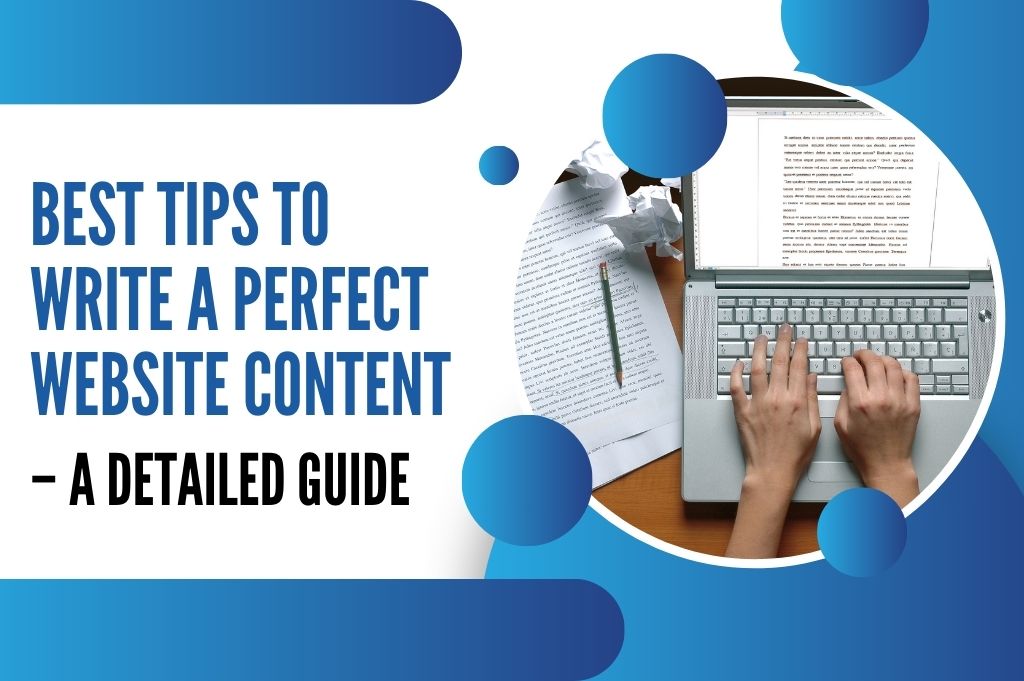Website content refers to the textual, visual, or multimedia content that makes up the information presented on a website. It encompasses everything from the written text on the pages to images, videos, infographics, and other forms of media. The purpose of website content is to convey information, engage visitors, and fulfill the goals of the website, whether it’s providing information, selling products or services, or simply entertaining. Hope you will enjoy the guide from The Set Site.
Effective website content should be aligned with user intent and clearly conveying the purpose. Additionally, content for website should be Search Engine Optimized (SEO) to improve its visibility on search engines result and increase traffic on Website. We should follow tips to write effective website content.
Best tips to write website content
1. Know your Audience
Understand your audience preferences, needs and interests to write your content to engage them. Before content writing, you need to know which type of search they do? who is coming to your website? and what’s their needs and problems which they want us to solve.
Adapt your writing style to match the language and tone that your audience uses and appreciates. If you are successful in learning your audience intent, then your website content becomes valuable for them and trust between you and your audience starts building.
2. Clear and concise
Try to write your content, clear, concise and to the point. Clear content ensures that your website content is understood by your audience easily without any confusion and misinterpretation. When your content is clear and to the point then it leaves a long-lasting impact on your audience. Readers will read easily your message clearly in just a few words.
Clear communication reflects positively on your brand. Search engines also favor content that is clear and concise. Clear and concise content respects your audience’s time, engages them effectively, and leaves a lasting impact.
3. Know your competitors
To write effective website content knowing your competitor is also a good move. Go to Google and discover high-ranking websites. By analyzing them you can identify gaps in your content strategies and discover opportunities to offer unique content to your audience.
Knowing your competitors empowers you to create content that’s not only relevant and engaging but also strategically positioned to capture your target audience’s attention.

Headlines serve as a point of interaction with the audience. Attractive headings decide that your content is being ignored or captured by your audience.
A well-written headline immediately grabs the user’s intention and conveys the main idea of topic. A clear and attractive headline enhances the readability of your website content.
5. Use keywords
Keywords are the terms that users enter into search engines. If you wisely incorporate keywords into your content for your website, you increase the chances of your website ranking. Keywords are essential tools for content writers to enhance the visibility, relevance, and overall impact of their content.
6. Engaging opening
The opening sets the mood for the entire piece. An engaging opening immediately grabs the reader’s attention, by developing a passion in them to continue reading. It entices them to explore further to discover what your content has to offer.
If your content opening clearly describes the idea that meets with user intent, then a connection is built between the user and your website.
Also Read: How SEO Helps to Grow Your Business
7. Use visuals wisely
Visuals, such as images, charts, graphs, and infographics, can simplify complex concepts and data, using them wisely to make them easier for readers to understand and remember. Visual aids can clarify information that might be challenging to explain solely through text. Visuals can help you describe key points, evoke emotions, and create a more immersive experience for your readers.
8. Call to action (CTA)
Clearly include a call to action, guiding readers on what you want them to do next (e.g., sign up, contact, buy).
9. Highlight only as necessary
Highlights only when necessary. Avoid bold the text extensively when there is no need. Unnecessary highlighting also has a bad impact on our content.

10. Use Bullet points and list
Present information in bullet points or lists for easy digestion and quick comprehension. Lists make complex information into small chunks that are easily readable. Avoid making paragraphs on paragraphs when content can convey in easy bullets points that are more likely to engage audience.
11. Make links easy to identify
Clear and identifiable links improve the user experience by making it easier for visitors to navigate your website. Users can quickly understand which elements are clickable and where they lead by clicking on them. Clearly labeled links help users understand the context and relevance of the linked content.
12. Avoid grammar, spelling or punctuation error
Make sure your content should be error-free. The common errors are grammar, spelling or punctuation errors. They impact badly on your website position and traffic.
13. Be Authentic
Maintain an authentic and consistent tone that reflects your brand’s personality and values.
14. Search engine optimization (SEO)
Search engine optimization is also important for effective website content. By applying SEO techniques your content will rank higher in search engine results. SEO increases visibility, and traffic and provides a better user experience.
15. Proofread and edit
This is your post-writing step. Proofreading is very crucial because it can eliminate grammatical errors, and spelling mistakes, enhance clarity, and consistency and make sure that correct content is conveyed to your audience.
16. Regular updates
Your website or its content should be up to date so that your audience demands new ideas and information so make sure that your website content is updated regularly according to the market trend.
Conclusion
In conclusion, effective website content serves as the cornerstone of successful digital marketing strategies. By adhering to best practices such as understanding your audience, maintaining clarity and conciseness, and utilizing SEO techniques, businesses can create content that resonates with users and drives engagement.
Additionally, staying informed about industry trends and regularly updating content ensures relevance and maintains audience interest over time. By following these tips and continuously refining content strategies, businesses can establish themselves as authoritative sources in their respective industries and build lasting relationships with their audience. Remember, the key to effective website content is to provide value, engage users, and ultimately drive desired actions.







